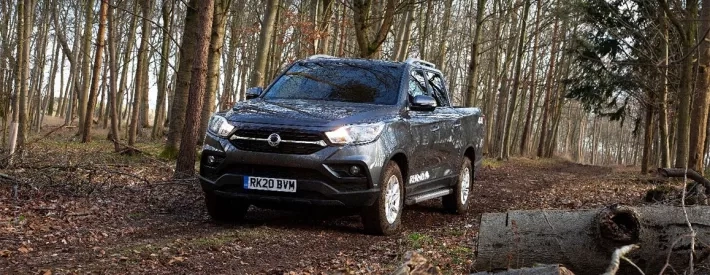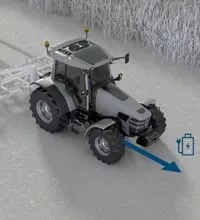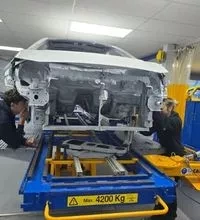Picking up the commercial opportunities

Pick-up trucks in the USA sit at the top of the sales chart, but the segment’s success in Europe, and the UK, is a little more mixed. MotorPro looks into why the successes have been tempered by the failures.
From the outside you could be forgiven for feeling bewildered by the extent pick-ups dominate automotive sales in the USA.
Outselling all other types of vehicle, Ford's F-Series pick-up took the number one slot yet again in 2020, with almost 790,000 finding buyers. Chevrolet's Silverado pick-up grabbed the number two peg, with nearly 590,000 sales while the Ram (formerly known as the Dodge Ram) pick-up was in number three position, with over 560,000 finding homes.
Contrast these figures with the, far more modest, total number of pick-ups registered in the UK. In 2020 it came to just 35,691, down 32.7% on 2019's 53,055 courtesy of coronavirus. At 13,097 registrations, Ford's Ranger was the biggest-seller.
Sliding sales
The British pick-up market has seen a number of casualties in recent years.
Drop-outs have included Mercedes-Benz's X-Class, Volkswagen's Amarok and Fiat’s Fullback. Mitsubishi's L200 is set to disappear too as a consequence of the brand's decision to withdraw from Britain and Europe.
Such departures should be seen in a context wider than that of the UK.
Mercedes-Benz ceased production of the premium-price X-Class because sales across all of its markets were not what the three-pointed star hoped they would be.
The current Amarok was discontinued across Europe says VW because the facilities used to construct it in its Hanover, Germany, plant were needed to assemble the new ID Buzz electric van. Amaroks assembled in Argentina are still on sale in global markets however and an all-new Amarok based on Ford's Ranger will go on sale in 2022.
A perhaps-less-well-publicised reason why some manufacturers are sliding out of the pick-up sector is European legislation which obliges them to reduce their average CO2 emissions. Pick-ups typically emit a lot of carbon from the tailpipe; so, if you drop them from your line-up, your average comes down.
Manufacturers willing to bite the bullet and stay the CO2 course could find the pickings are worth having, even though they are less bountiful than Stateside. It's all thanks to a healthy interest in powerful, extremely-well-specified, four-door double-cab pick-ups for use as an alternative to a hatchback or a saloon.
Adherents include leisure users who wish to tow a horsebox or a boat at the weekend, and owners of small businesses who feel that driving a vehicle with plenty of bling says a lot about the success they have achieved.
Their ability to reclaim VAT on it just so long as it has a gross payload of over a tonne doesn't hurt either. Bling or no bling, a 4x4 double-cab is still classed as a light commercial for VAT purposes.
The eagerness for better specifications is illustrated by the fact that goodie-laden Wildtrak models accounted for 80% of Ford Ranger sales in Britain in 2019, up from 73% the previous year.
Bigger power, bigger sales
It’s a lucrative sector Toyota is determined to do better in as it launches a revamped version of its legendary Hilux.
The big change is the advent of a 204hp 2.8-litre diesel which should answer criticisms that the departing model needed more power. It joins the existing 150hp 2.4-litre diesel.
Harnessing more horses makes sound sense. Models with 175hp or more on tap accounted for 70% of UK pick-up sales in 2019, according to Toyota.
Hilux took 40% of registrations in the sub-175hp category the manufacturer adds, which gives it a handy platform to build on now the 2.8-litre is available. It believes that marketing the truck with more punch under the bonnet is certain to boost UK orders.
Toyota has re-engineered Hilux's suspension in a bid to deliver a smoother ride, reconfigured the steering to improve handling and manoeuvrability, and brought in a new automatic limited-slip differential. The truck has been restyled externally and the cab interior has been reworked too, with enhanced equipment.
Hilux is up against Ford's Ranger, Nissan's Navara and Isuzu's D-Max, none of which are likely to give ground willingly. In contention too are SsangYong's Musso and Musso Rhino.
The SsangYong brand may not have the street cred of its better-known rivals; but a high standard of equipment and competitive pricing could give it an edge in tough times.
The European pick-up market may not be as buoyant as it is state-side, but there is demand for vehicles that are equally suited to commercial applications, and offer more car-like comfort levels.




